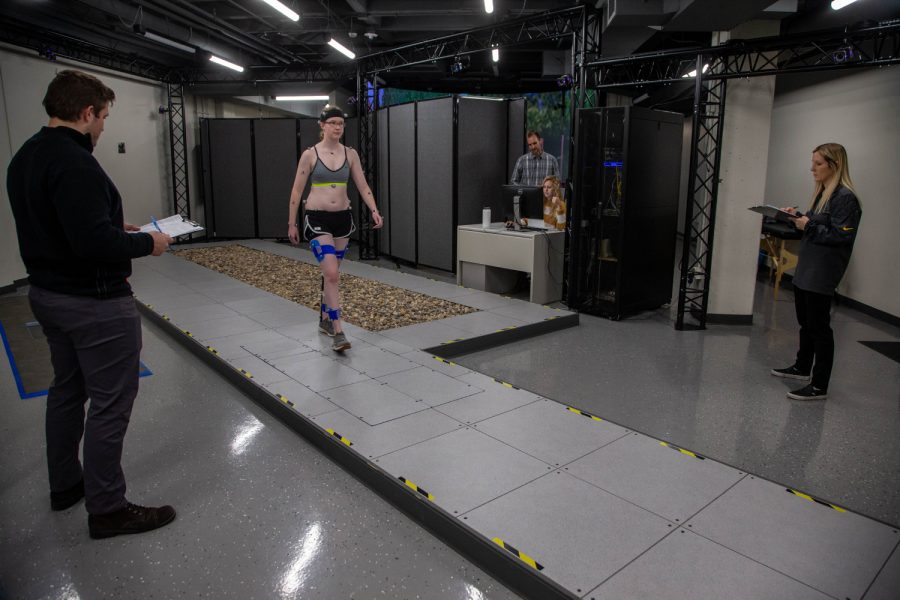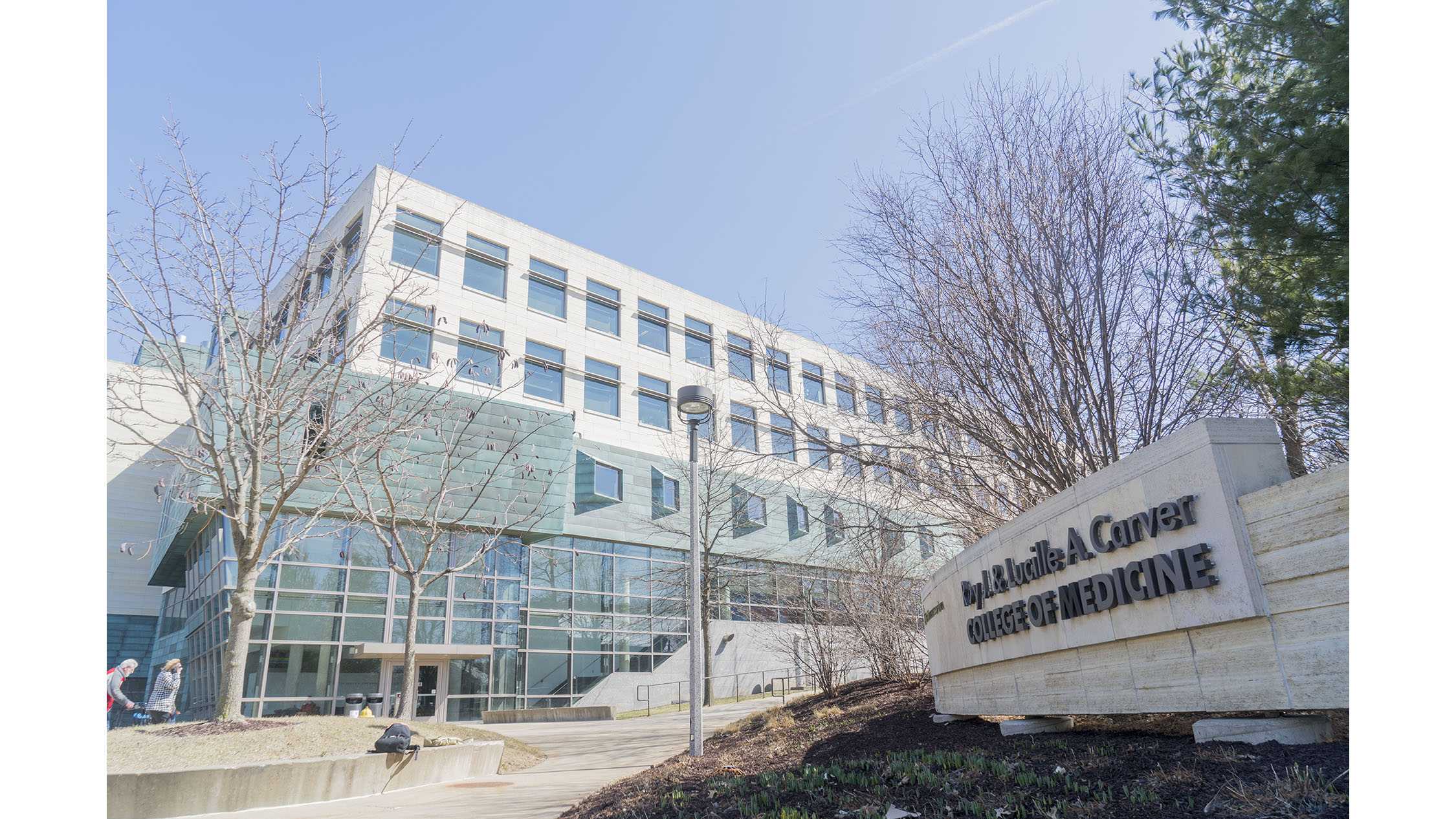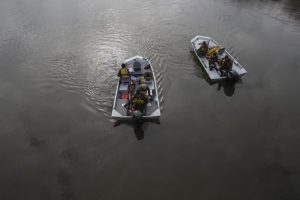New UI facility works to improve quality of life of those who have experienced limb trauma
Using the University of Iowa’s Human Performance and Clinical Outcomes Laboratory, researchers are studying devices that could help military veterans and civilians who have suffered limb trauma.
PhD student Kirsten Anderson walks across the lab during a computerized gait analysis on Thursday, Nov. 14, 2019. The small spheres attached to her body are sensors that cameras see to make a computer-generated figure.
November 17, 2019
With the use of a virtual-reality screen and various simulated terrains, the University of Iowa Physical Therapy and Rehabilitation Science Department has begun a new research study focused on the use of structural devices to aid military veterans and civilians who have suffered trauma in the lower extremities.
Jason Wilken, associate professor in the UI Department of Physical Therapy and Rehabilitation Science, said the current research focuses on improving mobility and overall quality of life in individuals who have experienced high-energy lower-limb trauma. The researchers are using the UI’s new Human Performance and Clinical Outcomes Laboratory, which supports the research study.
“The room that we now utilize as the lab used to be a storage room, so I think this is a much better use of the space,” Wilken said. “We have recently added new resources to the lab and continue to make plans to expand it.”
The lab furthers the research and clinical trials already or currently being conducted throughout the UI, Wilken said. In addition, the lab gives students learning and research opportunities while bringing developed advancements to veterans, he added.
The research team is testing and evaluating the effectiveness of carbon fiber dynamic orthoses — a type of brace worn on a leg that has suffered trauma to provide a high energy, stable walking pattern, Wilken said.
The research was funded by two grants from the U.S. Defense Department. The first grant funds a $2.4 million clinical trial to evaluate two commercially available orthoses. The research includes civilians at Iowa and veterans and service members at the Minneapolis Veterans Health Care System and Walter Reed National Military Medical Center.
The other is part of a $10 million grant in collaboration with the UI Orthopedics and Rehabilitation Department.
“We seek to prevent the development of ankle arthritis by using the device to reduce forces in the injured ankle, thereby protecting the ankle cartilage and prevent the development of arthritis,” Wilken said.
Molly Pacha, research associate for the UI Physical Therapy and Rehabilitation Science Department, works as a project manager with a focus on civilian and military regulatory requirements for studies funded by the Defense Department.
“The work being done in the lab and within the department reflects the passion that much of our staff and faculty have for finding a solution and making a difference,” Pacha said. “The different tools and resources we have at our exposure just continue to grow and benefit our finding.”
RELATED: Advanced virtual-reality tech helps UI scientists study pedestrian behavior
The laboratory uses optoelectronic motion capture — a highly accurate movement recording method that detects body heat and forces plates in the floor to measure how individuals walk. It is sometimes referred to as biomechanical gait analysis or computerized gait analysis, Wilken said.
“Although our current work is focused on improving outcomes for injured service members, the work can also benefit individuals who have experienced traumatic injuries due to car crashes, farm accidents, falls, or other high energy injuries,” Wilken said.
Linda Lancere, research associate with the human performance and clinical outcomes laboratory, said her experience at the UI during her yearlong fellowship has been one full of learning and growth.
“My experience with the University of Iowa has been rewarding and eye-opening,” Lancere said. “The Human Performance and Clinical Outcomes Lab, as well as our work on the carbon fiber dynamic orthoses, has been a great opportunity to learn new skills that I can take with me back home.”






